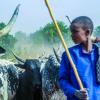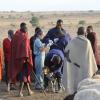John A. Crump
Adjunct Professor in the Department of Medicine
Adjunct Professor in the Department of Pathology
Adjunct Professor of Global Health
Appointment:
Topics:
Countries:
John A. Crump
Adjunct Professor in the Department of Medicine
Adjunct Professor in the Department of Pathology
Adjunct Professor of Global Health
Crump, a specialist on infectious diseases, is the former site director for DGHI's longest-running partnership at the Kilimanjaro Christian Medical Centre in Moshi, Tanzania. After graduation in Medicine from the University of Otago, Dr Crump undertook postgraduate education and training in Christchurch, South Africa, London, Australia, and the United States. He is a specialist in both internal medicine and medical microbiology, and has trained in field epidemiology with the Centers for Disease Control and Prevention in the USA.
Projects
-
Global Epidemiology of Invasive Salmonelloses
United States
-
The Impact and Social Ecology of Bacterial Zoonoses in Northern Tanzania: Understanding Transmission Patterns Among Humans, Livestock and Wildlife Hosts
Tanzania
-
Multi-Country Typhoid Fever Surveillence Program in sub-Saharan Africa
Tanzania
Publications
-
Ibarz-Pavon AB, Bielsky M-C, Bose R, Cavaleri M, Crump JA, Hombach J, et al. Consultation report - considerations for a regulatory pathway for bivalent Salmonella Typhi/Paratyphi A vaccines for use in endemic countries. Vaccine. 2025 May 22;56:127189.Dyson ZA, Cerdeira L, Sharma V, Carey ME, Holt KE, Global Typhoid Genomics Consortium. The TyphiNET data visualisation dashboard: unlocking Salmonella Typhi genomics data to support public health. Genome Med. 2025 May 9;17(1):51.Foster MW, McMahon TJ, Ngocho JS, Kipengele AH, Violette M, Chen Y, et al. Mass spectrometry-based quantification of proteins and post-translational modifications in dried blood: longitudinal sampling of patients with sepsis in Tanzania. 2025.Madut DB, Rubach MP, Hertz JT, Bodenham R, William G, Peter TA, et al. Healthcare utilisation for febrile diseases in northern Tanzania: a randomised population-based cluster survey. BMJ Glob Health. 2025 Mar 6;10(3).
See more publications at Scholars@Duke



